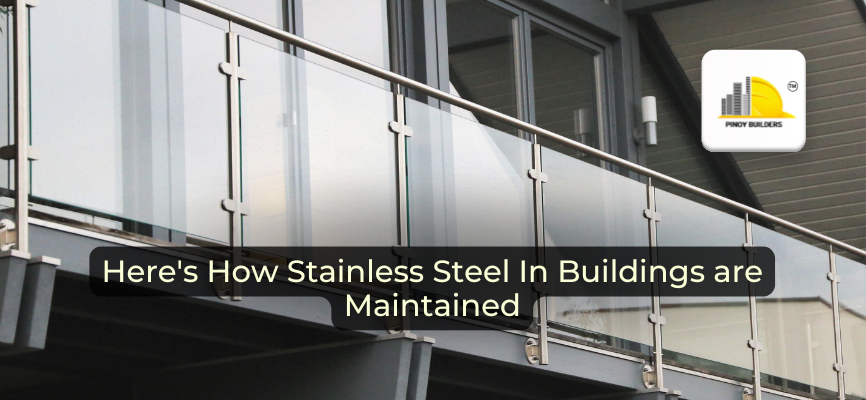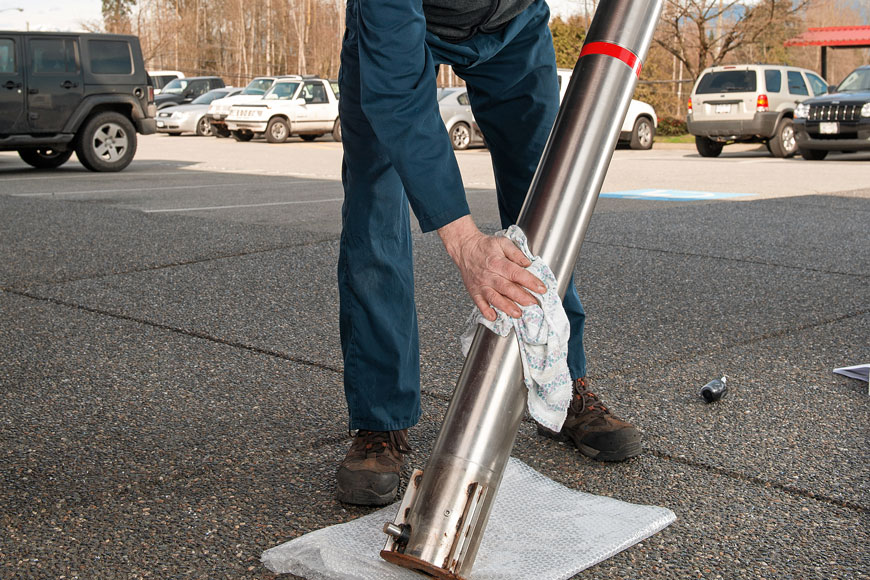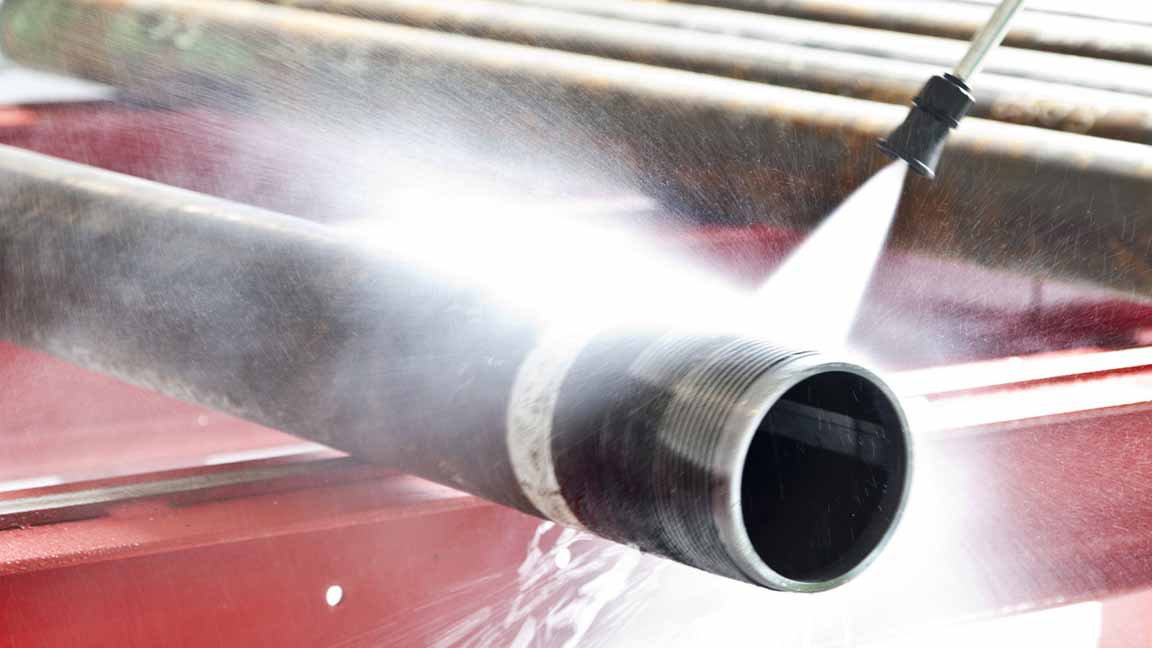Stainless steel may survive the life of a building if properly constructed. However, as with any other material, after many years of use, unsightly surface deposits might form. Accidents, vandalism, improper cleaning practices, and installation concerns can all produce unsightly surfaces, damage, and even quick surface corrosion. With the correct cleanup strategy, surface restoration is frequently possible.
Rainfall can typically be expected to wash off accumulations of dirt and other deposits efficiently on external applications, such as facades, depending on the degree of exposure. During a routine cleaning, special attention should be paid to covered areas to ensure that airborne contaminants are removed. This is especially critical in marine and industrial contexts, where the accumulation of airborne chlorides or Sulphur dioxides can cause localized corrosion if not properly eliminated.
Simple Ways to Clean Stainless Steel
Cleaning stainless steel is simple. A typical routine cleaning technique might be:
1. Remove any loose dirt by rinsing with water.
2. Wash in warm, clean water with soap, detergent, or a diluted (1%) ammonia solution. Use a clean sponge, gentle cloth, or soft fiber brush to apply.
3. Rinse and dry in clean water.
:max_bytes(150000):strip_icc():format(webp)/how-to-clean-stainless-steel-1900570--6-30d61f3e23ec40ed9f75e4754ce9c944.jpg)
Photo Courtesy: The Spruce
How to Clean Severely Rusty Stainless Steel?
Alternative cleaning methods might be applied when stainless steel has become severely rusty with symptoms of surface discoloration (perhaps as a result of neglect or misuse).
1. Soapy water or a mild detergent is usually safe and effective at removing fingerprints and other blemishes from architectural finishes. There are exclusive spray cleaning fluids that combine the simplicity of washing with a light temporary film that creates an even and flawless shine. These spray cleansers remove existing fingerprints while also leaving the surface in a condition that lowers the likelihood of fingerprints appearing during subsequent servicing. After rinsing with clean water and blotting dry, follow the polish lines.
2. Mild home cream cleaning products with soft calcium carbonate additives are usually effective for more persistent stains. This should work well for removing watermarks and light discoloration as well. Use a rag, sponge, or a soft nylon or natural bristle fiber brush. (An old toothbrush can come in handy.) Wipe dry after rinsing thoroughly with clean water. Stick to the polish lines.
3. A 10–15 percent solution of phosphoric acid is usually useful for removing lime deposits from hard water. A solution of one part vinegar to three parts water, on the other hand, is frequently effective. Brush the stainless steel to loosen it after soaking it in the solution. Rinse well with fresh water.
4. Alcohol-based products such as methylated spirit and isopropyl alcohol, as well as other solvents such as acetone, can be used to erase oil and grease streaks. These products do not cause stainless steel to corrode. It’s best to use a clean, non-scratching cloth to apply clean solvent multiple times until all signs of the partially dissolved oil/grease are gone. After cleaning with soap and water, rinse with clean water and allow the air to dry. Stick to the polish lines.
5. One part nitric acid to nine parts warm water can be used to eliminate rust spots. Leave for 30 to 60 minutes, then rinse well with water and flush any drains. Rinse well with fresh water. Wear rubber gloves, mix the solution in a glass container, and handle the acid carefully.
Photo Courtesy: Reliance Foundry
6. Proprietary alkaline or solvent-based paint strippers can be used to remove paint and graffiti. The use of hard scrapers or knives should be avoided to avoid scratching the underlying stainless steel surface. On patterned surfaces, use a soft nylon or bristle brush.
7. Metal polishes, such as those used to clean chromium-plated goods, can be used to treat heavily neglected surfaces. Polishes for refinishing automotive paint should also be examined. Highly polished surfaces may be scratched by certain cleaning solutions, so use caution. Paste substance residues should be fully eliminated. To remove contaminants, apply an unique stainless steel cleaning product comprising phosphoric acid, rinse with water, and dry. To avoid a patchy look, it is recommended that the entire surface of the component be coated.
Photo Courtesy: EngStack
DONT’s for Cleaning Stainless Steel
The following cleaning products should not be used on stainless steel:
Cleaning products containing chloride, particularly those using hydrochloric acid;
hypochlorite bleaches;
silver-cleaning solutions

Photo Courtesy: Reddit
If these are spilled or unintentionally applied to stainless steel surfaces, they should be immediately washed off with plenty of fresh water.
All applicable health and safety information from the provider should be read and properly understood before beginning any task. If you’re unsure, seek further information. When cleaning or rinsing with water, it’s a good idea to wipe the surface dry to avoid watermarks, especially if you live in a hard water area. The usage of deionized water will prevent hard water stains from forming. When choosing cleaning products, keep in mind not only their compatibility with stainless steel, but also their possible impact on other materials like glass, sealants, stone, and so on.
RELATED ARTICLES:
5 Reasons to Consider Steel as Your Next Construction Material
Different types of steel bars used in construction
Disadvantage & Advantages of Steel Reinforcement, Purpose of Reinforcement
CITATIONS:
- Houska, C. (2016, November 29). Cleaning and maintaining stainless steel. Construction Specifier. Retrieved October 7, 2021, from https://www.constructionspecifier.com/cleaning-and-maintaining-stainless-steel/.
- How to maintain stainless steel. Glass & Stainless. (2020, June 8). Retrieved October 7, 2021, from https://www.glassandstainless.com/articles/how-to-maintain-stainless-steel/.
- IMOA. (n.d.). Cleaning Architectural Stainless Steel. Retrieved October 7, 2021, from https://www.imoa.info/download_files/stainless-steel/euroinox/Cleaning.pdf?m=1454359954&.
- Stainless Steel – Cleaning, Care and Maintenance. AZoM.com. (2002, January 11). Retrieved October 7, 2021, from https://www.azom.com/article.aspx?ArticleID=1182.
![]()












